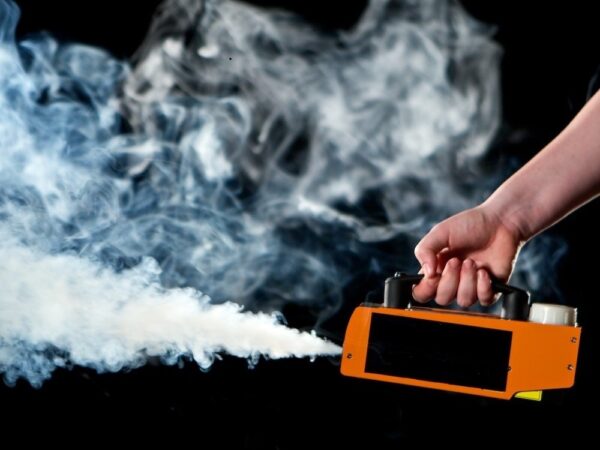so, what is a blower door test, or air tightness test? A blower door test is a crucial assessment used to evaluate the airtightness of newly built and refurbished homes, let’s go deeper into the details:
Purpose and Measurement criteria:
- A blower door test measures the air tightness of the fabric of your building. The more air-tight your building the lower the energy cost.
- Airtightness is typically expressed as either:
- Air leakage: The uncontrolled movement of air into and out of a building, measured as X m³/hr/m²@50Pa.
- Air change rate: The rate at which air is exchanged, expressed as X ach/hr@50Pa.
- A lower air leakage rate indicates better airtightness and a more energy efficient home.

Fabric first approach
- Improved Airtightness improved is a key aspect of the fabric-first approach to building.
- By achieving good airtightness, you can significantly reduce space heating requirements, making the home more energy-efficient and cost-effective.
- Blower door tests help assess whether a home meets the desired level of airtightness and identify areas for improvement.
- For eco homes aiming for Passivhaus status, passing the blower door test is essential as they often need to attain an air tightness figure of 1m³/hr/m²@50Pa. which is 5 times lower than a standard homes.
How a blower door test works:
- A specially calibrated fan is installed in a door (or window) of the dwelling and/or commercial buildings.
- The fan pressurizes the building to 50 Pascals(50Pa), simulating strong wind conditions.
- The blower door kit consisting of a gauge and blower door measures the amount of air required to maintain this pressure within the building.
- By analysing data about the building’s envelope size (shown in square metres) and internal volume (shown in cubic metres) the tester calculates air leakage or air change rate of the conditioned space within the building.
Building Regulations and SAP:
- Airtightness checks are necessary for new build homes to complete the ‘as-built’ Standard Assessment Procedure (SAP)required by building regulations Part L.
- You need to confirm that your achieved airtightness aligns with the design SAP for the building to pass the blower door test.
Remember, a well-executed blower door test contributes to both energy efficiency and comfort in your home.

How we can help you PASS your blower door test
We are here to try and help you pass your air tightness test at the first attempt. Firstly, our experienced engineers have over 20 years in the field of blower door testing on both dwellings and commercial buildings, so we know how to help clients to pass their testing. we are also one of the few air tightness test companies accredited for both UKAS & ATTMA for air tightness testing.
Our simple roadmap to a successful smoke shaft air test:
- Site survey visits by experienced air tightness consultants.
- UKAS and ATTMA Level 2 air testing company
- UKAS and ATTMA blower door certification
- The latest high-powered fan equipment to test buildings with floor areas in excess of 15000m2
- UKAS calibrated equipment
- Diagnostic leakage surveys testing blower doors, smoke machines & thermal imaging cameras.
- Rapid testing service – sometimes within 48 hours from receipt of order!
- One of the few companies with an office in London.
We are one of the leading design, consultancy, and compliance air tightness testing companies in the UK. It’s APT’s aim to provide a friendly and professional stress-free experience. Please contact Darren on 07775623464, or email us at info@airpressuretesting.co.uk got more information.
